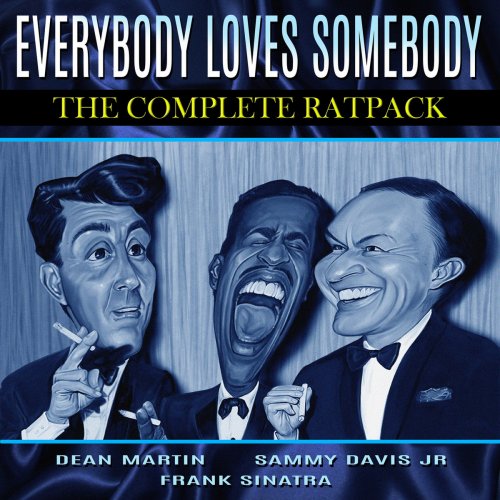Daniel Gaede - Vivald: The Four Seasons (2008) [SACD]

Artist: Daniel Gaede
Title: Vivald: The Four Seasons
Year Of Release: 2008
Label: Tacet – TACET S 163
Genre: Classical, Baroque
Quality: DSD64 image (*.iso) / 2.0, 6.0 (2,8 MHz/1 Bit)
Total Time: 00:60:02
Total Size: 3.44 GB
WebSite: Album Preview
Tracklist:Title: Vivald: The Four Seasons
Year Of Release: 2008
Label: Tacet – TACET S 163
Genre: Classical, Baroque
Quality: DSD64 image (*.iso) / 2.0, 6.0 (2,8 MHz/1 Bit)
Total Time: 00:60:02
Total Size: 3.44 GB
WebSite: Album Preview
Concerto No 1 La Primavera/Spring
1. Allegro 3:04
2. Largo E Pianissimo 2:16
3. Allegro 3:49
Concerto No 2 L'Estate/Summer
4. Allegro Mà Non Molto 5:29
5. Adagio 1:48
6. Presto 2:30
Concerto No 3 L'Autunno/Autumn
7. Allegro 3:12
8. Adagio Molto 4:51
9. Allegro 2:50
Concerto No 4 L'Inverno/Winter
10. Allegro Non Molto 3:13
11. Largo 1:53
12. Allegro 3:06
Concerto Op. 12 No 1 RV314 in G minor
13. Allegro 3:33
14. Adagio 4:16
15. Allegro 2:50
Concerto RV 257 In E Flat Major
16. Andante molto e quasi allegro 4:42
17. Adagio 3:11
18. Allegro 3:03
A very traditional, in some senses, reading that will delight fans of modern instruments but frustrate HIP fans.
1st off, the good points - the tempo choices are very lively in the outer movements & the slow movements are also well chosen. Also, despite the relatively large forces the articulation is a source of wonder at the dazzling clarity from the Polish Chamber Philharmonic Orchestra. Daniel Gaede also produces a beautifully sweet tone without a hint of difficulty & clearly has a very good rapport with the players & in general there is good musicianship on display - it is easily the best modern instrument account on SACD that I have heard to date. However some of the phrasing is a little too Romantic in feeling to what many listeners will now be accustomed - those looking for a more modern account in the traditional style can be assured that they will fall in love all over again with this score.
A little more problematic is the recording layout in Mch configuration, although the sound in terms of timbre is most pleasing. Where in the past, Tacet have either given us "moving" sound or changed the layout from 1 piece to the next to bring out the various aspects of the composition as dramatically as possible, here they adopt only 1 staging that is successful in such regards only some of the time. The layout adopted is:
Solo violin (straight ahead of listener)
1st violins (directly left)
2nd violins (just ahead right)
Viola (behind left)
Cello & harpsichord (behind right)
Double bass (just behind right)
The 2ch layer obviously has none of these issues & is entirely successful.
A good version for listeners in 2ch and if the seating choices appeal, also good for the Mch fraternity.
1st off, the good points - the tempo choices are very lively in the outer movements & the slow movements are also well chosen. Also, despite the relatively large forces the articulation is a source of wonder at the dazzling clarity from the Polish Chamber Philharmonic Orchestra. Daniel Gaede also produces a beautifully sweet tone without a hint of difficulty & clearly has a very good rapport with the players & in general there is good musicianship on display - it is easily the best modern instrument account on SACD that I have heard to date. However some of the phrasing is a little too Romantic in feeling to what many listeners will now be accustomed - those looking for a more modern account in the traditional style can be assured that they will fall in love all over again with this score.
A little more problematic is the recording layout in Mch configuration, although the sound in terms of timbre is most pleasing. Where in the past, Tacet have either given us "moving" sound or changed the layout from 1 piece to the next to bring out the various aspects of the composition as dramatically as possible, here they adopt only 1 staging that is successful in such regards only some of the time. The layout adopted is:
Solo violin (straight ahead of listener)
1st violins (directly left)
2nd violins (just ahead right)
Viola (behind left)
Cello & harpsichord (behind right)
Double bass (just behind right)
The 2ch layer obviously has none of these issues & is entirely successful.
A good version for listeners in 2ch and if the seating choices appeal, also good for the Mch fraternity.
![Daniel Gaede - Vivald: The Four Seasons (2008) [SACD]](https://www.dibpic.com/uploads/posts/2023-02/1677429616_booklet-back.jpg)


![Tim Kliphuis, Maya Fridman, Marc van Roon - Kosmos (2025) [Hi-Res] Tim Kliphuis, Maya Fridman, Marc van Roon - Kosmos (2025) [Hi-Res]](https://www.dibpic.com/uploads/posts/2025-12/1765893448_folder.jpg)



![Wadada Leo Smith - Divine Love (1979/2025) [Hi-Res] Wadada Leo Smith - Divine Love (1979/2025) [Hi-Res]](https://www.dibpic.com/uploads/posts/2025-12/1765802240_cover.jpg)


